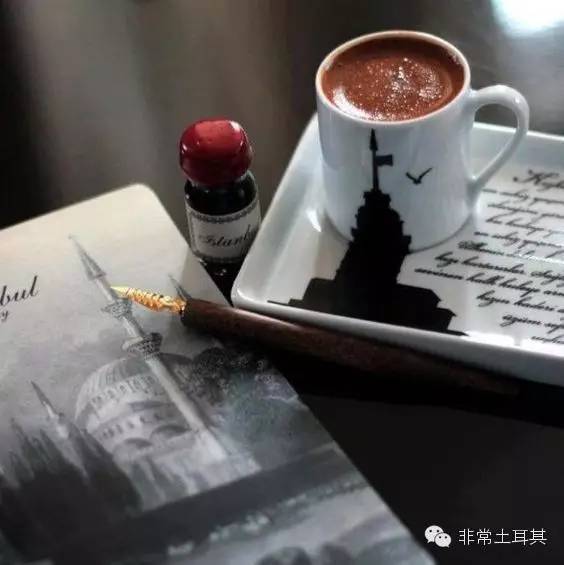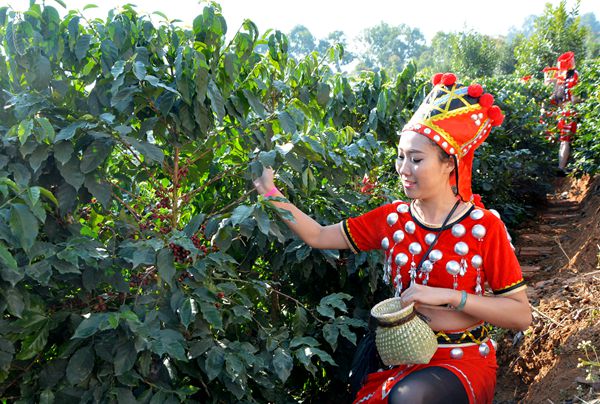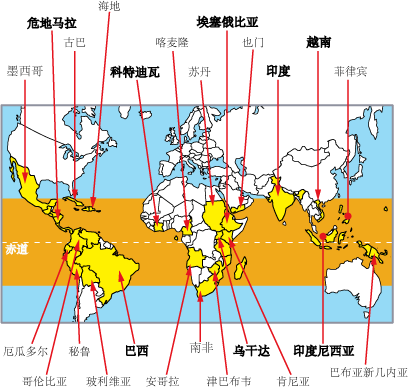Turkish Coffee Loved by Australia People Australia's Native Coffee Culture "Force" Starbucks
People who regard food as the most important thing like to mark a city or a country with a dish or a kind of food. Well, for Melbourne, Australia, which is mixed by multi-ethnic immigrants, the world has heard more about Australian grape wine, while coffee is closer to the life of local people. Melbourne is the coffee capital of Australia, on a par with Paris, Vienna, Seattle, Havana, Vancouver and S ã o Paulo.
Hugo learned from the report on May 3 that Australia's first Starbucks opened in Sydney's CBD in 2000 and then rapidly expanded to 87 across the country. However, the good times did not last long. In 2008, Starbucks had to close 61 stores in one breath. Today, Starbucks has only 22 stores in New South Wales, Queensland and Victoria in Australia. Starbucks "lost" Australia, which was interpreted by the media as Starbucks unable to compete with Australia's mature coffee culture. Two articles published in TheAge, Australia's most influential newspaper, read, "Starbucks memo: try selling ice to Eskimos next time" and "American coffee culture is baked".
"TheAge" gives such a strong sense of superiority of the title is understandable, because "TheAge" is located in the heart of Australian coffee culture-Melbourne. It should be said that the mature coffee culture has raised the demand of Australians for coffee.
Coffee is everywhere in Melbourne. Coffee is sold in a variety of ways, not only in cafes and pastry shops, restaurants and bars, but also during the day. You can even buy coffee in ice cream shops, sushi houses, bookstores and florists, as well as open-air coffee stands in flea markets. If you use Google Maps to search for "coffee" on CBD in Melbourne, there will be hundreds of places where you can buy coffee, and there are only three Starbucks, one of which is so small that you can sit on only two high chairs. Melbourne beat Rome and Vienna to become the best place for coffee in the world, according to a global survey of users released by travel website Booking.com in March 2014.
Australians prefer "single coffee"
Although Europeans brought coffee to mainland Australia in 1788, it was not until the 1950s that Australia first tasted the authentic espresso (Italian espresso). At that time, there were a large number of European immigrants from Italy, Greece, France, Turkey, Austria and Hungary. They had a great demand and high demand for coffee. The Italians brought not only pizza and spaghetti, but more importantly, they brought espresso.
Pellegrin'sEspressoBar of Bourkestreet in CBD, Melbourne is considered to be the first cafe to offer authentic espresso. Today, Melbourne is still the largest gathering place for Italians and Greeks outside their homeland. Since there are no Starbucks in Italy, it seems less difficult to understand that Melbourne, which has the largest number of Italian people, has only six Starbucks.
In 2002, when Starbucks was expanding rapidly in Australia, TheAge interviewed SistoMalaspina, one of Pellegrini's 's operators. Asked if a coffee chain like Starbucks had hit Pellegrini's 's business, SistoMalaspina said he didn't feel affected, saying confidently: "their coffee is good, but ours is the best."
Pellegrini's not only offers the best coffee, their coffee is almost the cheapest in Melbourne CBD. In the past two years, the price of a small cup of coffee in Melbourne is between A $3.20 and A $3.50, while a cup of coffee in Pellegrini's is A $3, while the same cup of coffee at Starbucks is A $3.80. People in Melbourne don't seem to care about the menus and decorations that Pellegrini's hasn't changed in the last 60 years. The only thing that matters is coffee. Of course, the price is not entirely unimportant. A 2013 survey of Australian coffee chains found that both Macafe and Starbuck's were poorly rated, but Macafe only cost A $2 for a cup of coffee, so Macafe survived.
In terms of coffee taste, Australians prefer simpler coffee varieties, such as Espresso and lattes. The most popular Flatwhite, created in Australia, is slightly stronger than lattes, has little milk foam and tastes more concise than lattes. Starbucks coffee is a gaudy and tasteless drink in the eyes of Australians. Starbucks also offers Flatwhite, but on the one hand it doesn't taste strong enough, on the other hand, too much foam tastes more like a cappuccino.
Marketing blunder, lost to the local chain
Starbucks doesn't seem to take any advantage in marketing either. Starbucks opened its first branch in Melbourne on the famous Lygon Street, and of course the Starbucks is also closed. Lygon Street, located in the Carlton district known as "Little Italy", is famous for its many Italian restaurants, ice cream and coffee. I used to live near Lygon Street for more than a year, and I often buy coffee at SeasonsProvedore. Their coffee is the most espresso I have ever drunk. To put it bluntly, Starbucks lattes are more like coffee milk than the lattes in this house. Moreover, this macaron is also one of the best in Melbourne, with good taste, large size and low price.
Another very popular store on Lygon Street is Brunetti, which has been selling a variety of espresso, cakes, biscuits, chocolates and ice cream since 1974. Brunetti has four stores in Melbourne and moved to Singapore in 2013, while the old store on Lygon Street has a newly renovated area of more than 2000 square meters and more than 400 seats. Because it is close to the shopping center, it provides people with a very comfortable and convenient place to chat and rest.
As mentioned earlier, Italians are not the only immigrants who love coffee. You can also find very authentic Turkish and Lebanese cafes in Melbourne. In fact, such cafes can be found all over Australia except Melbourne. HaremCorner is a Turkish cafe in South Australia, a cafe converted from a barn that also sells silver ornaments with Western Asian flavor. It is located in Handolph, a small German town southeast of Adelaide. Look, Australia's complex immigration structure is also its charm.
Australians' favorite Turkish coffee
In addition to all kinds of individual cafes, Australian coffee chains are also on the rise. Including the aforementioned GloriaGean's; has a 24-year history, TheCoffeeClub;, an all-Australian brand with 340 stores in Australia, New Zealand, Thailand, New Caledonia and China, started in Melbourne and rapidly expanded to more than 70 stores in Australia. Hudson'sCoffee; South Australian emerging chain brand CIBOEspresso, as well as Australia's largest coffee bean and coffee equipment provider Vittoria and so on. Although these coffee chains are not as amorous as small cafes, they are popular because of their excellent coffee tastes, which are usually opened in shopping malls, airports, subway stations, office buildings and city squares and other areas with high traffic.
The reason why Starbucks is not as good as expected in Australia is precisely why it is popular in China. First of all, China does not have a very mature coffee culture, and most Chinese people began to know coffee from Nestle instant coffee. At least until I came to Australia, Starbucks coffee seemed to me to be a coffee standard. In addition, it also provides a bright and spacious space to talk to people. In recent years, there have been many themed cafes in China, such as cat coffee, nostalgic coffee and gallery coffee. There are many gimmicks, but the quality of coffee is still mediocre. More people go to cafes and don't care whether the coffee is good or not. Of course, it is also possible to create a unique coffee atmosphere in China. In any case, free and diverse development is healthy, and time will leave cafes that can become cultural symbols.
Hugo learned that in the millennium, Starbucks confidently entered the Australian market. In 2008, Starbucks announced a substantial divestment. In just eight years, the number of stores in downtown Melbourne has plummeted to three, mainly by foreign tourists and foreign students. For Melbourne people who are particular about coffee taste, Starbucks' fast-food-like operation is not to their taste, just like asking people who know how to drink tea and tea ceremony to drink a cup of tea in tea bags. Even in this form of fast food, there are local brands like GloriaJean's, so Starbucks has no market. Interestingly, Starbucks failed in Italy and Australia, which partly illustrates Italy's far-reaching influence on Australian coffee culture. Like morning tea, sushi and pizza, coffee, a foreign culture, has taken root in Australia, a multicultural paradise, and has been deeply rooted in this land for nearly a century, known as part of the unique culture of Australia, especially Melbourne.

Important Notice :
前街咖啡 FrontStreet Coffee has moved to new addredd:
FrontStreet Coffee Address: 315,Donghua East Road,GuangZhou
Tel:020 38364473
- Prev

An introduction to Yunnan Coffee in China Yunnan coffee is distributed in Baoshan, Nawenshan, Simao, Yunnan.
Yunnan Coffee in China was planted on a large scale in the mid-1950s, with a planting scale of 4000 hectares. By the end of 1997, the planting area of coffee in the province had reached 7800 hectares. At present, the planting area of the province accounts for 70% of the national area, and the output accounts for 83% of the whole country. Yunnan coffee has established the dominant position in China in terms of planting area and coffee bean production. Cloud
- Next

An in-depth analysis of the Australian coffee shop industry: the development of the cultural boutique coffee of Australian coffee
Whether in China or Australia, coffee culture has always been one of the favorite food cultures. Editor Mocheng ingenuity will provide you with an in-depth analysis of the past life and present life of the Australian coffee industry from the history of coffee culture to the current industrial situation. The Chinese coffee market is in the ascendant. I hope this article will attract jade and make a small contribution to the coffee cooperation and exchange between China and Australia. -for this article only
Related
- How did the Salvadoran coffee industry develop in Central America?
- What exactly does the golden cup extraction of coffee mean?
- The Origin of Coffee flower
- [2023 Starbucks World Earth Day] there are more meaningful things besides free Starbucks coffee!
- What kind of coffee is there in Spain? 9 Flavors of Spanish Coffee
- Aromatic African coffee| Kenya's coffee culture and historical production area
- Liberica Coffee Bean knowledge: the characteristics of Liberian Coffee beans of the three original species of Coffee beans
- The origin and formula of Spanish latte introduces the taste characteristics of Bombon coffee in Valencia, Spain.
- How to adjust the solution of over-extracted coffee
- What is the tasting period of coffee beans? What is the period of coffee and beans? How should coffee wake up and raise beans?

